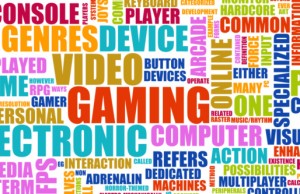Upgrading the (Video) Game of Life
By Asher Crispe: January 27, 2011: Category Inspirations, Living with the Times
2010: Allow me to hit you head on—here is the juice:
 There are 183 million active gamers, including 97% of the youth in the US alone, playing an average of 13 hours of games a week. There is even a class of American extreme gamers, now numbering some 5 million, who have made gaming into a quasi full time job with an average of 45 hours a week dedicated to games. Some projections put the industry at the eye popping $68 billion mark by 2012. With a mind boggling 3 billion (yes billion!) hours devoted a week to this practice, we might wonder where is this all heading.
There are 183 million active gamers, including 97% of the youth in the US alone, playing an average of 13 hours of games a week. There is even a class of American extreme gamers, now numbering some 5 million, who have made gaming into a quasi full time job with an average of 45 hours a week dedicated to games. Some projections put the industry at the eye popping $68 billion mark by 2012. With a mind boggling 3 billion (yes billion!) hours devoted a week to this practice, we might wonder where is this all heading.
The craze is global. Countries no longer have the largest armies in the world. Today, the title of world’s largest army goes to the players of the hit video game Halo 3. With 15 million virtual soldiers and counting, they have amassed a whopping 10 billion kills of their cyber enemy. And the current king of the mega popular online multiplayer games, World of Warcraft, has had its players invest 5.93 million years of collective playing over the course of its history. You might wonder how they arrived at such a figure? Well, it’s not impossible when you’re logging 30 million hours a day.
These are just a few of the bunker busting factoids fired at us by game designer and researcher Jane McGonigal in her recently released tour de force book on contemporary game culture entitled Reality is Broken: Why Games Make Us Better and How They Can Change the World. The statistics speak for themselves: the age of gaming has arrived in a big way. It is hard to think of another present-day trend that has been so captivating to so many. McGonigal makes a compelling case for the profoundly far-reaching consequences of a game culture whose virtual universe is pouring over into the real world in some surprising and inspiring ways.
The magnitude of the waves of social transformation that continue to emerge from the gaming scene are becoming more apparent. One thing is certain: we are only beginning to explore and harness the uplifting and positive potential for games. By digging deep down, past the common assumptions that gaming is a pure distraction or some form of mindless entertainment (the cause of an entire generation’s attention deficits), we may begin to detect the pulse of something revolutionary. We might even find hints to the optimal educational road that lies ahead. We could be on the verge of discovering something amazing about ourselves, our motivations and the path towards transforming our world for the better.
assumptions that gaming is a pure distraction or some form of mindless entertainment (the cause of an entire generation’s attention deficits), we may begin to detect the pulse of something revolutionary. We might even find hints to the optimal educational road that lies ahead. We could be on the verge of discovering something amazing about ourselves, our motivations and the path towards transforming our world for the better.
Pursuant to this line of thought, without getting into the potential negatives of ‘excessive’ play or the questionable content of many popular games, I would simply submit that there is something about gaming on the whole that is revealing the deepest levels of reality as described in the mystical texts of Kabbalah. In order to understand this, we need to explore a concept articulated in the body of writings that are known as Lurianic Kabbalah. These writings stem from the great 16th century master of esotericism, Rabbi Yitzchak Luria (1534-1572). In particular, there were certain traditions he did not wish to have committed to writing that were passed down which only appear in isolated works in the generations following him. One such work, is known as Emek HaMelek or The Valley of the King (1648) and contains an entire section devoted to the subject of solitary gaming or play between the Creator and Himself.
The expression employed in this kabbalistic context is “the delight of the King with Himself.” It should be pointed out that the Hebrew term sha’ashuim means a kind of back and forth play between the King (as the symbol of the Divine) and Himself. This reflects a higher level reading of the Torah, as well as a higher level of reality that is described as the ‘Torah (teaching) of the world of emanation’ (Torat HaAtzilut).
By ‘emanation’ the kabbalists mean a state of non-separateness, a non-dual consciousness where there is nothing other than the Divine. It is like saying that there is no proper way of distinguishing creation or created beings from Divine manifestations. Creation is nothing or no-thing (in and of itself) but rather collapses into the identity of the Divine. There is but a singular reality, an undivided wholeness.
So while in the world of emanation, we can’t speak of God and us, in the world of creation, which is addressed from the perspective of the ‘Torah (teaching) of creation’ (Torat HaBeriyah), we can begin to speak of an apparent duality and separation of the created from the Creator. To borrow from the title of McGonigal’s book, ‘reality is broken’ at this level. The conflict is real from our perspective. The split or breaking is depicted in a variety of ways as self-other, of the Divine above and us below.
 These two worlds, frameworks or perspectives on reality negotiate our understanding of human experience in very different ways. Creation seems filled with conflict—a world full of wars and other overwhelming challenges. Emanation, on the other hand, presents a King with no ‘other’ with which to generate conflict. God is like a gamer with no one to play with. As a result He has to play back and forth with Himself.
These two worlds, frameworks or perspectives on reality negotiate our understanding of human experience in very different ways. Creation seems filled with conflict—a world full of wars and other overwhelming challenges. Emanation, on the other hand, presents a King with no ‘other’ with which to generate conflict. God is like a gamer with no one to play with. As a result He has to play back and forth with Himself.
Like a person who plays both sides of the chess table, the Divine has to produce a virtual reality where He pretends to ‘forget’ that the ‘other’ is Him, as it were. There are not really two players. There is no source of obstacles except the ones that
God creates from Himself for Himself voluntarily. This bears a remarkable resemblance to McGonigal’s citing of philosopher Bernard Suit’s apt definition of gaming:
“Playing a game is the voluntary attempt to overcome unnecessary obstacles.”
The metaphysics of game play are carved out in even more grandiose terms in the book of Proverbs (8:30-31) where the voice of the Torah speaks in the first person as the source code for the universe at play in the hands of a Divine programmer. A direct translation might read:
“…and I was His daily delight (game), playing always before Him; playing with the Universe, His earth; and my delights (games) were with the children of men.”
Deconstructing these verses, we find that there are four distinct gaming/playing levels at work.
 The first is the Creator playing with the Torah. Jewish mysticism declares that the Torah preceded Creation itself and was used as the source code for Creation. Torah may be likened to the operating system of the entire universe. Playing with the Torah is like experimenting with the code. One ancient rabbinic teaching states that God created worlds and then destroyed them before making our universe. These primordial prototype universes evidently suffered from design flaws and had different laws governing them—an idea supported today by some physicists advocating multiverse cosmology. The rules of the cosmic game required tuning.
The first is the Creator playing with the Torah. Jewish mysticism declares that the Torah preceded Creation itself and was used as the source code for Creation. Torah may be likened to the operating system of the entire universe. Playing with the Torah is like experimenting with the code. One ancient rabbinic teaching states that God created worlds and then destroyed them before making our universe. These primordial prototype universes evidently suffered from design flaws and had different laws governing them—an idea supported today by some physicists advocating multiverse cosmology. The rules of the cosmic game required tuning.
Looking at the second expression: “playing always before Him” conceals a beautiful subtly in the original Hebrew which more correctly reads ‘playing all-time [each and every different temporal dimension] before Him. In other words, there are games that have to do with playing with time itself. An example of this might be a seeking out the correct order of events. Alternatively, time travel adventures reflect a profound sense of temporal play. This is not to mention how dependent any kind of coordinated action is upon timing. Getting the timing down is integral to most game experience. In spiritual terms, Divine providence would exhibit the greatest play of time and timing, directing the events in play.
Examining the third expression from our passage in Proverbs: “playing with the universe, His earth” we may suggest that this implies a form of spatial play. The term tevel, rendered here as ‘universe’ implies a kind of charted or settled territory. Telemetrics, as the high-tech spatial mapping of today, provides the digital ‘universe’ with ample opportunities to play topographically. A less high tech form of playing with space or spaces might be figuring out where things go in a good old fashion puzzle or placing oneself in a classic maze.
For the last of the four examples: “and my delights (games) were with the children of men”—we are clearly enmeshed as human beings in game play. If the game is with the human subject, we could say that it is a psychologically and socially motivated game. The key is our interaction with ourselves and each other. The instruction of the Torah is a guide that explains the serious game of life, its goals and feedback mechanisms etc.
 One of the core teachings about the era of redemption and Moshiach (the Messiah) in Judaism is the revealing of the Torah of emanation—the disclosure of reality as a game which is in no way trivial. On the contrary, this game is of penultimate significance. It is educational. We merge with the Torah and the Divine to form one core unity. The teachings of Chassidic philosophy in particular focus on this dimension, the signature of which was the assertion from the founder of the movement, known as the Ba’al Shem Tov, that everything read in the Torah is revenant, to every person, at all times, and in all places.
One of the core teachings about the era of redemption and Moshiach (the Messiah) in Judaism is the revealing of the Torah of emanation—the disclosure of reality as a game which is in no way trivial. On the contrary, this game is of penultimate significance. It is educational. We merge with the Torah and the Divine to form one core unity. The teachings of Chassidic philosophy in particular focus on this dimension, the signature of which was the assertion from the founder of the movement, known as the Ba’al Shem Tov, that everything read in the Torah is revenant, to every person, at all times, and in all places.
This interpretive principle, based on universal relevance, turns everything one reads in the Torah into an inflection within the psycho-spiritual realms of a person. From the perspective of creation, there is a place called Egypt and a place called Israel, there was a person called Moses and a Pharaoh, plagues, a spiting sea, a snake in a garden and a flood. Each is located in time and space outside of the subject in question—i.e. the reader.
All of this shifts in the perspective of emanation, the Torah of emanation. From this new dimension ‘I’ become everything that I read. I am Israel and I am Egypt, I am Moses and I am Pharaoh. I am even Adam, Eve, the snake and the garden. These ‘objects’ of the text of the Torah now populate my inner world. They are forces playing within me. One could even propose that the boundaries between the real and the virtual are largely erased and this erasure is accomplished by means of a gamification of the text of the Torah itself. After all, for those who are familiar, most of kabbalistic teaching is the fruit of elaborate language games.
What else defines gaming?
McGonigal cites a list of four critical traits:
- Goals
- Rules
- Feedback
- Voluntary participation
The Torah has all of these.
The Torah even stages games within games so that there can be goals within goals. Practically, this means that there are life goals for each player as well as an overall objective for all of the players collectively as part of something much greater than themselves. We are even enjoined to be ever vigilant with these goals. Every move we make in the serious game of life is tracked and significant. The ultimate objective is the complete elevation of this world in the messianic age, a time that counts among its objective manifestations the cessation of real war, replacing it with only its remembrance in a sphere of game play. Perhaps we are getting to the point where world conflicts can be settled with a session of Halo 3 between countries rather than the violence and bloodsheds of the ages?
What about rules? Jewish law or halakah is intended to be a kind of rule book for gaming. It defines the parameters of fair play. One popular type of video game is where the players don’t know the rules and have to figure them out as they play along. Part of the challenge is to decode the rules of the game based on one’s experience playing it. McGonigal explains that this is called ambiguous play.
Ambiguous play has a twofold echo with the Torah today. First, the vast majority of the world, even the Jewish world, is not aware of the rules, having never studied them. We are so often thrown into life trying to decipher how it works from the bottom up. To that end, the sages of the Talmud state that no one really gets these rules without having stumbled over them i.e. through the trial and error of experience.
Talmud state that no one really gets these rules without having stumbled over them i.e. through the trial and error of experience.
How about feedback? A more modernized translation of the concepts of reward and punishment would have to be that of feedback. In order to gauge our progress in the game of life, we need to sensitize ourselves to the notion that at every moment we are being sent feedback. Deferring feedback till after the game is over is of limited use unless you plan on playing again.
To that extent, Judaism does believe in reincarnation. One gets a final assessment after each game but, rather than failing and game over, some souls are sent back to play again until they make it all the way through to their intended goal. Or, as an alternative option, for the winners of the last competition, there is the possibility of leveling up—which means to play again but with a higher degree of difficulty or challenges for the seasoned gamer. Each quest pushes us further beyond our previous limits.
The real measures of feedback are not just chain reactions and tradeoffs for our actions. The sages of the Talmud saw the sharpest and most immediate feedback in the actions themselves. One such proof text refers to how the reward for a good deed is the good deed itself. One feels the sense of connection and connectivity right away. By contrast, the sages maintain, a negative act automatically attracts other negative acts. Here one picks up on the feeling of disconnection. The polarity of experience into attractive and repulsive charges is but one way of illustrating the constant communication the game environment is giving to the gamer.
 Finally, last on the list, is voluntary participation. On a more philosophical playing field we would call this the case for freewill. Many rabbis have argued that the only real need for freewill is so that the players in the game of life will have real choices. Will we follow the rules or not? All of the laws in the Torah stand on the foundation of individual responsibility. But how can one be ultimately responsible if one has no choice in the matter? One can always choose to not participate and there are consequences because that was a person’s choice. On a side note—the Divine is the supreme agent of voluntary participation, in that by definition there is no other who is compelling the Divine to play the game.
Finally, last on the list, is voluntary participation. On a more philosophical playing field we would call this the case for freewill. Many rabbis have argued that the only real need for freewill is so that the players in the game of life will have real choices. Will we follow the rules or not? All of the laws in the Torah stand on the foundation of individual responsibility. But how can one be ultimately responsible if one has no choice in the matter? One can always choose to not participate and there are consequences because that was a person’s choice. On a side note—the Divine is the supreme agent of voluntary participation, in that by definition there is no other who is compelling the Divine to play the game.
With so much to learn from games, we can no doubt see how they will become less of a ‘model for life’ and more like ‘life itself’ as time goes on.
Upgrading the (Video) Game of Life,






















;)
;)
;)
;)
;)
;)
;)
;)
;)
;)

Can’t recall the context or the precise words, but I vividly remember the moment: at a farbrengen/gathering sometime in the ’80’s, the Lubavitcher Rebbe referred to that sublime “delight of the King with Himself” and then paused for a moment… He kind of chuckled to himself, and as the sweetest imaginable smile flashed in his eyes he said something like ‘as if anyone really understands what that means,” then carried on with his talk. Delicious.
Whats the last level of G´ds game?
My ex husband, a child of holocaust survivors had a hard time being with his kids. But he bought my son a video game. It was called Simon’s Quest. My son’s name is Simon. My son got frustrated and did not want to play it. He was maybe 8 years old. My ex demanded he not quit and learn how to play. Needless to say my son loved video games, and mythical games of all kinds. My kids and their father played games all the time. I wasn’t really that good at them. Not good at all really. And I don’t particularly like them. I just remember the music to them all.
I think the depth of what you point out in this article says a lot about the love my son has for gaming. He teaches it now at age 35. It just blisses him out to do that. It says a lot about my son’s relationship to his father and his family heritage. My son is a big Soul. His every movement seems cosmic. This describes so much to me, so well. Thank you.
Dear Su,
Thank you very much for your email and for the personal experience that you have shared.
Wishing you all the best!
Asher